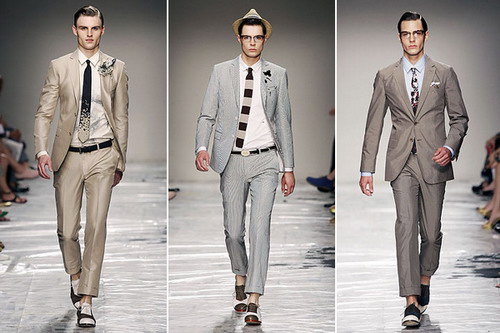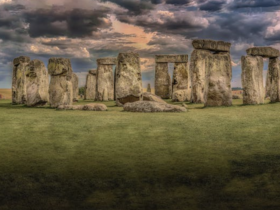Thanks in no small part to AMC’s Mad Men, vintage fashions are hotter than ever. And it’s not only women who want to make “throwback” their fashion-forward theme either. Men are doing it too. Not only are men wearing vintage fashions, but they are doing so at the office!
Typically men’s business attire is all about showing respect by blending in. So wearing something different, like vintage fashions, might not seem like a wise choice for men who want to move ahead at the work. But that is, perhaps, what is most amazing about this trend. Because most vintage fashions for men involve a classic traditional look that seems nearly ageless, men can step back in time, express a bit more individuality, and still be appropriately dressed enough to move up the corporate ladder.
Wearing Vintage
The key to wearing vintage, especially at the office, begins with one simple rule: Mix vintage with newer pieces. Wearing “all vintage” runs the risk of looking out of date or costumey. But mixing in few vintage pieces with a contemporary outfit provides that element of unexpected cool.
Generally speaking, men’s fashions between 1930 and the early 1960s present the least difficulties as they strike the most classic notes. (Tip: Watch classic films for ideas of styles and eras.)
Beginners may want to start with something small, such as adding a vintage watch, tie, collar bars, cuff links, or other fashion accessory to their usual business attire. If you are concerned the vintage fashion accessory is too flashy, let it be the stand-out in your outfit by keeping the rest of your look modern and muted.

Ties
While tie lengths and widths have varied over the years, today’s look dictates that the tip of your tie should not hang lower than your belt. Wearing your vintage necktie the same way will keep your look interesting yet modern.
Shirts
When it comes to purchasing vintage shirts, only buy those with proper-sized shoulders. Other issues, such as sleeve length and midsection, can easily be corrected by a good tailor. While improperly fitting shoulders can also be tailored, it is far more work and therefore more costly.
Pants
Depending on the era, the pants may have a higher rise than you’re used to wearing. Also, the trousers of a slim-fit vintage suit, much like today’s skinny pants, should have little-to-no break. (A break is where your pants fall on your shoes, creating a horizontal fold or bend above the cuff.) Breaks are reserved for pants with a standard (or wider) leg. In any case, any pants which flop around the ankles should be hemmed.
Suits
According to Janie Bryant, costume designer for Mad Men, men are always buying suits that are too big. (And Bryant means both vintage and contemporary suits, so take note!) While you may get away with an ill-fitting modern suit, people will likely not be so kind about vintage suits that do not fit right.
Two key points to remember in terms of a correctly fitting suits are:
.Your suit coat should fit easily and snugly against the back of your neck, leaving no gap in the back between the neck and the shoulders.
.Your suit jacket collar should rest lightly against your dress shirt collar, revealing 1/4″ of the shirt’s collar in the back.
Like vintage men’s shirts, vintage suit jackets should fit in the shoulders when you buy them as nearly everything else is readily remedied with proper tailoring.























